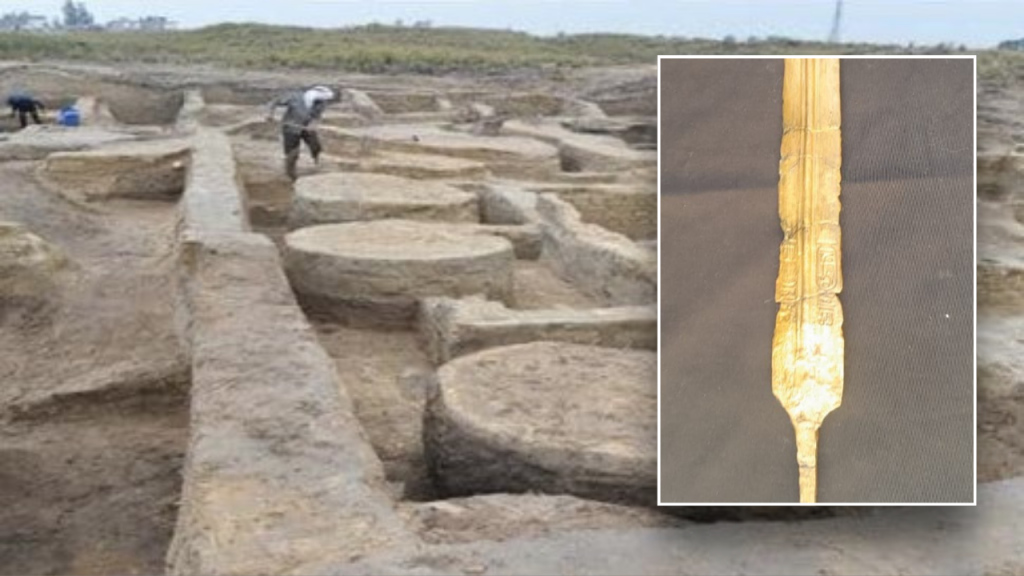Egyptian archaeologists recently discovered an ancient sword belonging to the military of Ramesses II, a pharaoh believed to be referenced in the Book of Exodus. The excavation took place in Housh Eissa, a city in the Beheira Governorate, at a site named Tell Al-Abqain. Among the findings were a series of mudbrick architectural units, including military barracks and storage rooms. One of the most significant discoveries was a bronze sword with the cartouche of Ramesses, despite the artifact showing signs of decay over time.
In addition to the barracks, archaeologists unearthed numerous artifacts and personal items belonging to soldiers, providing insight into their daily lives, religious beliefs, and military activities. The range of relics found included weapons, tools, hygiene items, and jewelry. These artifacts shed light on the customs and practices of the soldiers who inhabited the fort during the New Kingdom era. Among the items discovered were ivory kohl applicators, carnelian and faience beads, scarabs, and protective amulets.
Ramesses II, also spelled Ramses, was born in 1303 B.C. and died in 1213 B.C. He is believed to be the pharaoh referenced in the Book of Exodus, where Moses led the enslaved Israelites out of Egypt to the Desert of Paran. While the Bible does not specifically name the pharaoh who interacted with Moses, most scholars believe that Ramesses is the likely candidate. Dr. Mohamed Ismail Khaled, Secretary-General of the Supreme Council of Antiquities, highlighted the fort’s historical importance as a key outpost that protected Egypt’s borders from the Sea Peoples.
The architectural layout of the fort, with two identical groups separated by a narrow passage, demonstrates the ingenuity of ancient Egyptian engineers in adapting their surroundings for practical purposes. The fort played a crucial role in defending Egypt from attacks by the Sea Peoples, a group of tribes that posed a threat to the nation. The discovery of the ancient sword and other artifacts provides valuable insights into the military strategies, daily routines, and material culture of the soldiers stationed at the fort during the New Kingdom era.
The press release from the Egyptian Ministry of Tourism and Antiquities highlighted the significance of the find at Tell Al-Abqain, emphasizing the importance of understanding Egypt’s ancient history and preserving its cultural heritage. The excavation yielded a wealth of archaeological treasures, including the bronze sword with Ramesses’ cartouche, offering a glimpse into the military activities and personal belongings of ancient Egyptian soldiers. The artifacts provide researchers with valuable information about the society and customs of the time, shedding light on a crucial period in Egypt’s history.
Overall, the discovery of the ancient sword at Tell Al-Abqain adds to our understanding of Ramesses II’s reign and his military campaigns. The find contributes to ongoing research efforts to unravel the mysteries of ancient Egypt and showcases the skill and craftsmanship of the civilization’s artisans and engineers. The artifacts uncovered at the site provide a window into the past, allowing us to glimpse the lives and experiences of the soldiers who once occupied the fort and defended Egypt’s borders from external threats.













